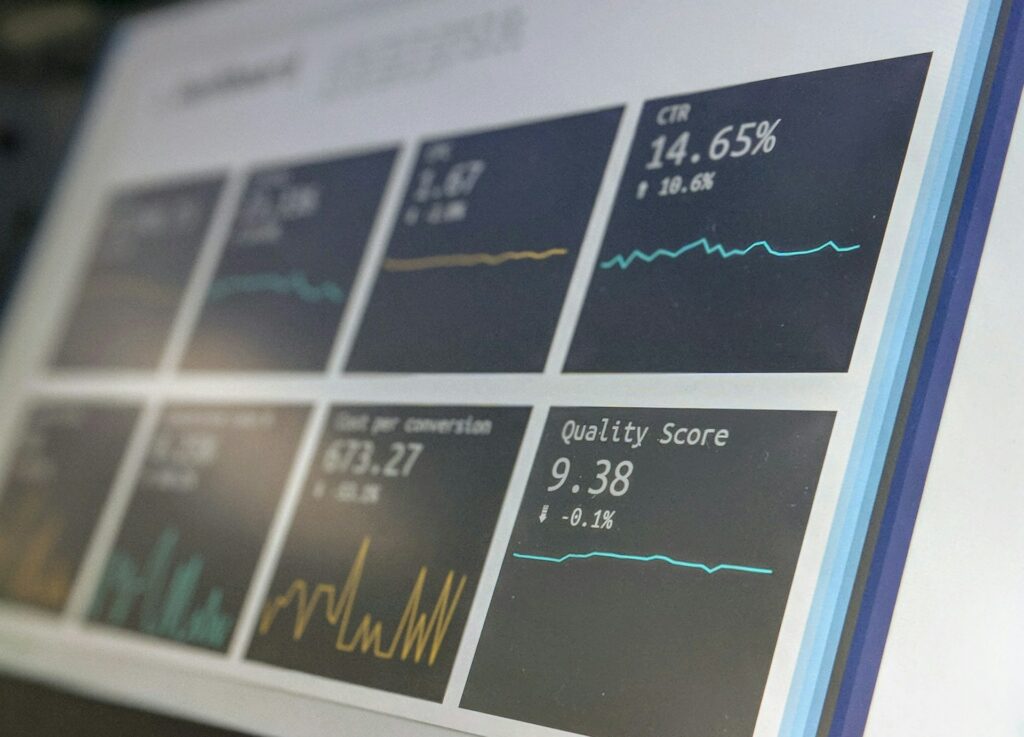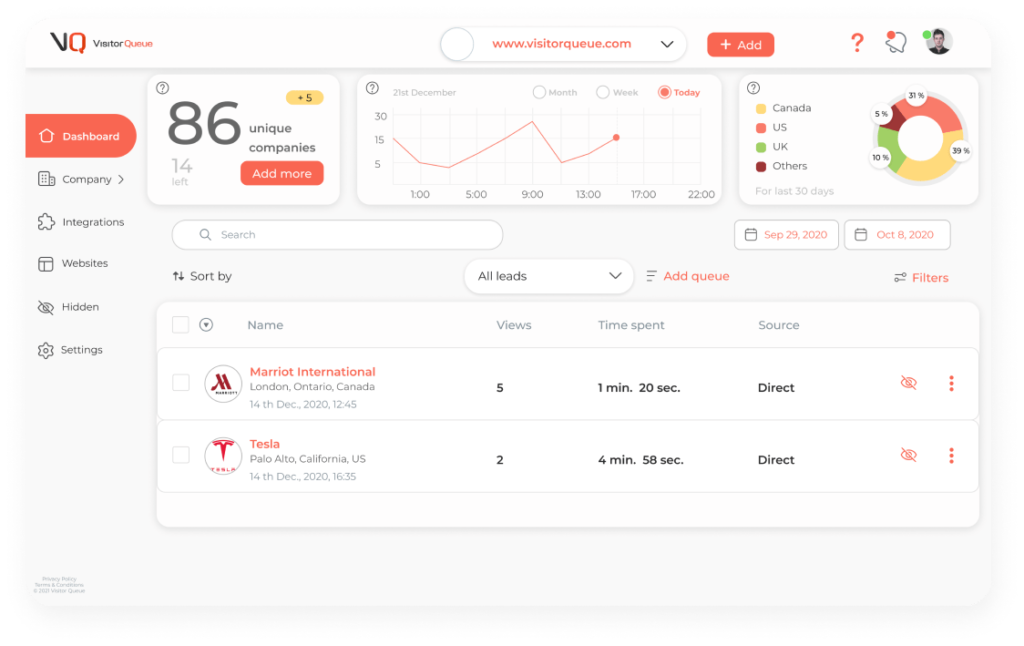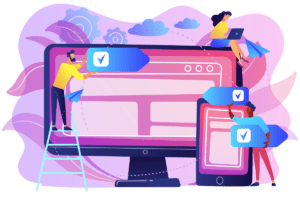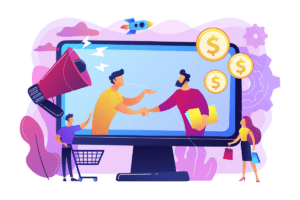Closing a deal is often the most challenging yet rewarding part of the sales process. Unlike B2C sales, B2B deals tend to be more complex, involving multiple decision makers, longer sales cycles, and higher financial stakes. Because of this, your B2B sales closing techniques are crucial. That’s why we put together this article of the top sales closing techniques that you should be using. Before we jump right in, let’s define what sales closing even is.
What is B2B Sales Closing?
B2B sales closing refers to the process of finalizing a sale with another business, turning a lead into a paying customer. It’s the final stage of the sales cycle, where the prospect agrees to move forward with purchasing your product or service. The sales closing process in B2B is typically more drawn out than in B2C due to the higher value of contracts, more stakeholders involved, and the complexity of the decision-making process. You may be negotiating with C-suite executives, procurement departments, and even legal teams. Therefore, B2B sales reps need to be prepared with a wide array of closing strategies tailored to different buyer personas and situations.

B2B Sales Closing Techniques You Need to Be Using
Now that you know more about what sales closing is, let’s break down the best techniques that will help you convert prospects into paying customers.
The Assumptive Close
The assumptive close is based on the idea that the deal is a natural progression of the conversation. Instead of asking directly if the prospect is ready to buy, you assume they are and guide them toward the next steps. So, rather than asking, “Are you ready to proceed?” say something like, “I’ll send over the contract, and we can get started next Monday.” This subtle shift implies that moving forward is the logical next step and positions you as a confident partner. This technique works well when the prospect has shown clear buying signals, such as asking about timelines, pricing, or onboarding processes.
The Alternative Close
The alternative close gives the buyer a choice between two or more options, both of which result in a sale. Instead of asking for a “yes” or “no,” you ask them to choose between different alternatives. Instead of saying, “Would you like to purchase?” ask, “Would you prefer a monthly or annual subscription?” or “Would you like to start on the 15th or the 1st?”. This technique works well when the buyer has already indicated interest but is stalling on the final decision. Offering choices makes it easier for them to commit by framing the decision as one of details rather than whether to move forward.
The Urgency Close
The urgency close creates a sense of urgency by highlighting a time-sensitive benefit or potential loss if the client doesn’t act quickly. You can use phrases like, “This special pricing is only available until the end of the month,” or “We’re nearly booked for this quarter—should I reserve your spot?”. This technique is effective when the buyer has been dragging their feet and you want to create a reason for them to act now. Be cautious, however, as overuse of this tactic can come across as pushy. When you think of the “car salesperson” stereotype, this is often the closing technique people think of.

The Summary Close
The summary close involves recapping all the value you’ve provided throughout the sales process before asking for the business. By restating the benefits, you reinforce the reasons why the client should move forward with the deal. At the end of your pitch, summarize the key benefits that align with the client’s needs. Then, ask them to proceed. For example, “So, just to recap: by choosing our service, you’ll get 24/7 support, a dedicated account manager, and access to our premium tools. How does that sound?”. This approach is ideal when your prospect has shown interest but hasn’t made a commitment yet. Summarizing benefits can serve as a gentle reminder of the value your product brings.
The Sharp Angle Close
Sometimes, a buyer will ask for benefits or additional features before they agree to close. The sharp angle close is a tactic where you agree to the additions, but only if they close immediately. If a buyer says, “Can you offer a discount?” you respond with, “I can offer you a 10% discount, but if I do that, can we finalize the contract today?”. This is particularly effective when you sense the buyer is on the verge of making a decision but needs one final push. It works well when the buyer is negotiating but is already sold on the product.
The Takeaway Close
The takeaway close works by suggesting that the prospect might lose something if they don’t act quickly. This technique taps into the psychological principle of loss aversion, where people are more motivated by the fear of losing something than by the prospect of gaining something. When the buyer seems hesitant, remove a key feature or offer and gauge their reaction. For instance, “If the premium package is out of budget, we could proceed with the basic one, but you won’t have access to the priority customer support.”. This is effective when the client is undecided or appears unmotivated to close the deal. The fear of missing out on a valuable feature often prompts them to reconsider their decision.
The Question Close
The question close is a consultative approach where you ask the client a question that naturally leads them to commit to the deal. This is typically one of the most common B2B sales closing techniques due to its open endedness. Instead of making a statement, you ask a question that prompts the client to envision the future with your product or service. For example, “How would implementing this solution impact your operations over the next quarter?”. This technique works well when you have a consultative relationship with the client and they value a conversational approach. It’s less about pushing the sale and more about helping the prospect see the benefits.
The Value-Based Close
The value-based close is about reinforcing the ROI your product or service will provide. This method is effective when dealing with price-sensitive clients. Again, one of the most common B2B sales closing techniques that you’ll see. Present the cost of your solution in the context of the value it will generate. For instance, “While this solution costs $50,000, it will save your company $100,000 annually by reducing downtime and improving efficiency.”. Use this when price is the primary objection. By framing the cost as an investment with a tangible return, you shift the focus from expense to value.

Other Sales Closing Considerations to Make
While your closing techniques are important, there are a ton of other considerations that you need to review.
Understanding the Decision-Making Process
One of the primary challenges in B2B sales is the complexity of the decision-making process. In most cases, you’ll be dealing with multiple stakeholders, each with their own priorities, goals, and concerns. It’s essential to understand who the key decision-makers are and what motivates them. Tailoring your pitch and closing technique to address the needs of each decision-maker can be a powerful way to build consensus and move the deal forward.
Building Relationships
In sales, relationships are everything. It’s not just about what you’re selling but also about who is selling it. Buyers want to feel confident that they can trust you to deliver on your promises, offer ongoing support, and act as a long-term partner. Closing a sale often comes down to the strength of the relationship you’ve built throughout the process. If you’ve spent months nurturing a relationship with a potential client, you’ll have a much easier time closing the deal compared to a competitor who has only had a few interactions with them. Building rapport, following up consistently, and demonstrating your value over time are key to creating trust.
Effective Follow-Up
The closing process doesn’t always happen in one conversation. Deals can take time, and following up consistently is critical to ensuring the deal doesn’t stall. After your initial pitch or meeting, it’s important to maintain regular contact, provide any additional information the client may need, and keep them engaged throughout the decision-making process. To learn more about following up, take a look at our article How to Write the Best Sales Follow Up Email.
Identifying Your Website Visitors
One often overlooked but powerful strategy in the B2B sales process is identifying your website visitors. Many companies visiting your site might be interested in your product or service but haven’t yet reached out to your sales team. That’s where Visitor Queue comes in. With the help of Visitor Queue, you can see exactly what companies visit your website, how they were acquired, the pages they viewed, and how long they spent on each page. You can also get an overview of each company, including employee contact information to help you reach out. This allows your sales team to proactively engage with prospects who have already shown interest, which can significantly increase the chances of closing a deal. For example, if someone on your sales team had a meeting with a client, and you see that they visit your website, this can help them follow up.

Final Words
Getting your clients to the point of conversion is tricky. It requires an understanding of your prospects’ needs, a strong relationship, and the ability to use the right closing technique. Remember, you shouldn’t use the same sales closing technique every time you try and close. You should change your approach based on the client, their needs, and personality type. It can take some time to figure this out, but will greatly help you in the long run. As always, if you have any questions about how to use Visitor Queue to identify your website visitors, do not hesitate to reach out.
 Identify
Identify Personalize
Personalize Benchmark
Benchmark Agencies
Agencies Integrations
Integrations Case Studies
Case Studies Use Cases
Use Cases Blog
Blog Resources
Resources









